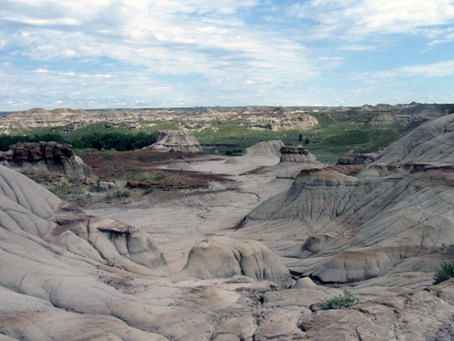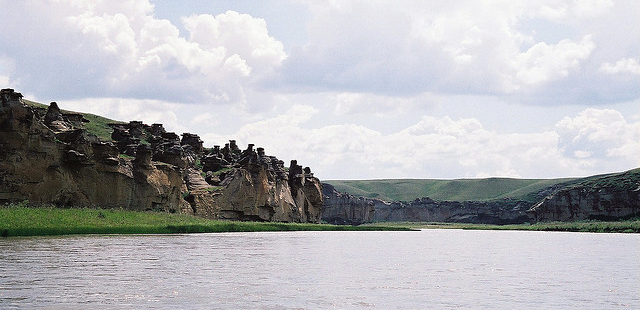Trackways #14, Spring 1998—When Walt Disney World opened Dinoland earlier this year, a little bit of Alberta shone beneath the Florida sun. As part of the attraction, Disney performers play palaeontologists explore the world of the dinosaurs. When looking for ways to immerse staff in dinosaur palaeontology, Disney looked north to the Royal Tyrrell Museum.
For five days in late winter, 10 performers learned to cast and prepare fossils, examined the spectacular specimens Museum staff are preparing, and toured the Museum from top to bottom. They also prospected for fossils in Dinosaur Provincial Park.
On the slopes of a park hoodoo, with dinosaur bones poking through the snow all around him, director Mark Renfrow couldn’t contain his excitement: he pulled out his cell phone and called his boss in Florida to rave about the experience.
© Royal Tyrrell Museum of Palaeontology 1997






